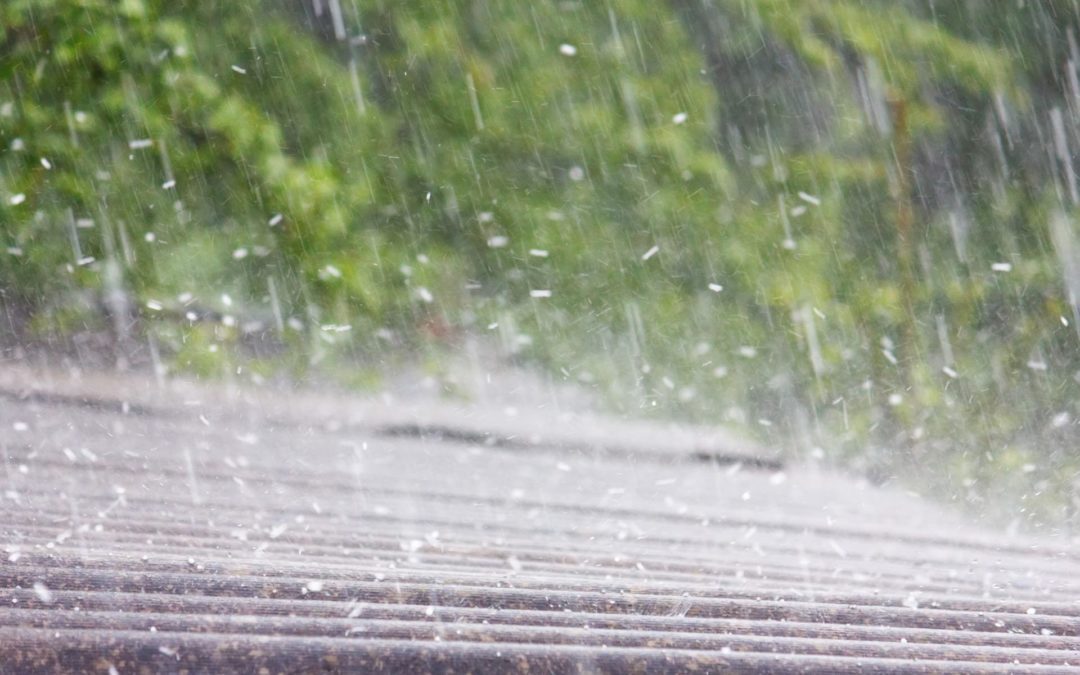It’s that time of the year again. Along with the baseball games, family vacations and other fun summer outdoor activities comes the threat of inclement weather. When the forecast includes hail and high winds, your home and roof can take a real beating. The extent of the damage and the need to repair or replace shingles or siding depends on a lot of factors, some of which aren’t easily visible to the untrained eye.
Hail Facts
Hail is simply frozen precipitation that forms inside of a thunderstorm. Since late spring and early summer are prime times for thunderstorms to develop, it is also the time of the year when many roofs and homes suffer damage. The Insurance Information Institute reports that hail-related losses average between $8 billion and $14 billion a year in the United States. According to NOAA’s Severe Storms database, there were 3,763 major hailstorms in 2021 alone.
The size and characteristics of hail are as individual as the insurance claims that come with it. Hail size is often correlated with familiar items such as a pea (pea-sized hail averages ¼ inch in diameter), a golf ball (1 ¾ inch diameter) and even softball size (4 inches in diameter).
Damage is caused not only by the size of the hailstone, but also by the shape and velocity at which it falls from the sky. While some stones are rounded in shape and smooth, others have jagged edges. Roofs and buildings are impacted differently by hail stones of any size or shape. For example, hail might cause dents and dings in aluminum siding, gutters and asphalt shingles. Vinyl siding or wood shakes might actually crack from the impact caused by a passing hailstorm.
How to Identify Hail Damage
Sometimes the effects of hail on your home and roof are obvious, but more often than not, your home may receive damage that isn’t easily identified by an untrained eye. This is further complicated by the varied characteristics of damage depending on the type of roofing materials originally used.
For example, asphalt shingles exhibit signs of damage by seeing notable “hits” that are black in color and appear randomly in no particular pattern. There may be a visible loss of granules on some shingles caused by the roof felt becoming exposed after a hail event. Shingles may also have a shiny appearance which indicates damage has occurred.
Wood or shake shingles may actually show clear dents or pock-like impressions indicating the hail stone has left its mark and may even have broken, jagged or cracked areas that are evident.
Similar hail damage characteristics may be evident on your home’s siding. Dents, cracks or holes following a hailstorm are sure signs of hail damage. While vinyl siding may crack or chip (especially in the unsupported sections between the ridge and valley), aluminum siding may show clear divots from the hailstones. Wood or composite siding will often show dings, or chipped paint where the hail stone made contact. Most often, a homeowner may not even notice the subtle but present damage left by a passing hailstorm, but that doesn’t mean it isn’t there.
Unless you are a roofing contractor, actually identifying, then quantifying, the extent of damage caused by hail is sometimes very difficult. In most cases, hail damage isn’t immediately visible without an up-close inspection. You should always call a professional roofing company to look after any weather-related event has passed. Reputable contractors will conduct a free inspection and let you know about the extent of the damage so you can make an educated decision about what to do next. Also, contact your insurance company, who will want to have a look themselves so they can begin coordinating your coverage and benefits.
Hail Damage Should be Mitigated Promptly
Once you hear from your insurance agent and the professionals about the extent of damage done, don’t be tempted to bypass the most important step after the storm which is to actually get that damage repaired. If you’ve been putting off getting a new roof, now is your opportunity to get that bigger project done as a part of your insurance settlement. Insurance coverages vary from one premium to another and are potentially impacted by the age of the existing roof, deductibles, and other factors. Your agent or adjuster will be able to help you sort through your coverage options.
Ignoring the problem caused by hail damage is never a good idea. Shingles weakened by hail damage become more susceptible to UV light which will accelerate deterioration. Wet or winter weather conditions will further cause your home’s roof to degrade and eventually leak, which leads to a whole different set of problems. Being tempted to take the insurance settlement and not do the repairs is also not advised. If you’ve collected the settlement but didn’t complete the repairs, it will be difficult (if not impossible) to claim hail damage from another storm in the future.
Contact the Hail Damage Roofing Experts
Alte Exteriors provides full residential roofing services throughout Central and Northern NJ. Our experts can help assess and solve damage caused by weather-related events and make sure your home is protected from further damage. We are a trusted, second-generation, family-owned, and operated New Jersey roofing company. Our clients trust us to accurately assess interior and exterior problems and recommend the best materials and methods for repairs. Contact Alte Exteriors today.
